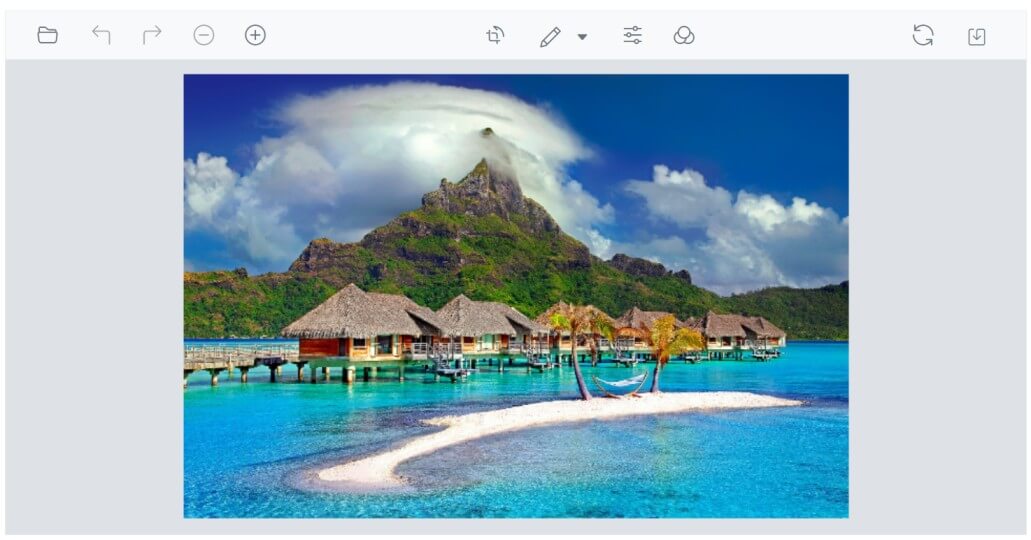Getting Started with Blazor Image Editor Component
13 Oct 20254 minutes to read
This section explains how to include the Blazor Image Editor component in a Blazor WebAssembly app using Visual Studio and Visual Studio Code.
To get started quickly with the Blazor Image Editor component, refer to this video or the corresponding GitHub sample:
Prerequisites
Create a new Blazor app in Visual Studio
Create a Blazor WebAssembly App using Visual Studio via Microsoft templates or the Syncfusion® Blazor Extension.
Install Syncfusion® Blazor ImageEditor and themes NuGet packages
To add the Blazor Image Editor component, open the NuGet Package Manager in Visual Studio (Tools → NuGet Package Manager → Manage NuGet Packages for Solution), then search for and install Syncfusion.Blazor.ImageEditor and Syncfusion.Blazor.Themes. Alternatively, the following Package Manager commands can be used:
Install-Package Syncfusion.Blazor.ImageEditor -Version 31.2.12
Install-Package Syncfusion.Blazor.Themes -Version 31.2.12NOTE
Syncfusion® Blazor components are available on nuget.org. Refer to the NuGet packages topic for the list of available packages with component details.
Prerequisites
Create a new Blazor app in Visual Studio Code
Create a Blazor WebAssembly App using Visual Studio Code via Microsoft templates or the Syncfusion® Blazor Extension.
Alternatively, create a WebAssembly application using the following terminal commands (Ctrl+`):
dotnet new blazorwasm -o BlazorApp
cd BlazorAppInstall Syncfusion® Blazor ImageEditor and themes NuGet packages
- Press Ctrl+` to open the integrated terminal in Visual Studio Code.
- Ensure the command is run in the project root directory where the
.csprojfile is located. - Run the following commands to install Syncfusion.Blazor.ImageEditor and Syncfusion.Blazor.Themes and restore dependencies.
dotnet add package Syncfusion.Blazor.ImageEditor -v 31.2.12
dotnet add package Syncfusion.Blazor.Themes -v 31.2.12
dotnet restoreNOTE
Syncfusion® Blazor components are available on nuget.org. Refer to the NuGet packages topic for the list of available packages with component details.
Register Syncfusion® Blazor service
Open ~/_Imports.razor and import the Syncfusion.Blazor and Syncfusion.Blazor.ImageEditor namespaces.
@using Syncfusion.Blazor
@using Syncfusion.Blazor.ImageEditorRegister the Syncfusion® Blazor service in ~/Program.cs of the Blazor WebAssembly app.
using Microsoft.AspNetCore.Components.Web;
using Microsoft.AspNetCore.Components.WebAssembly.Hosting;
using Syncfusion.Blazor;
var builder = WebAssemblyHostBuilder.CreateDefault(args);
builder.RootComponents.Add<App>("#app");
builder.RootComponents.Add<HeadOutlet>("head::after");
builder.Services.AddScoped(sp => new HttpClient { BaseAddress = new Uri(builder.HostEnvironment.BaseAddress) });
builder.Services.AddSyncfusionBlazor();
await builder.Build().RunAsync();
....Add stylesheet and script resources
The theme stylesheet and script can be accessed from NuGet through Static Web Assets. Include the stylesheet and script references in the <head> section of ~/index.html.
<head>
....
<link href="_content/Syncfusion.Blazor.Themes/bootstrap5.css" rel="stylesheet" />
<script src="_content/Syncfusion.Blazor.Core/scripts/syncfusion-blazor.min.js" type="text/javascript"></script>
</head>NOTE
See the Blazor themes topic for methods to reference themes in a Blazor application: Static Web Assets, CDN, and CRG. Also, see Adding script reference for approaches to add script references.
Add Syncfusion® Blazor Image Editor component
Add the Syncfusion® Blazor Image Editor component in ~/Pages/Index.razor.
<SfImageEditor Height="500"></SfImageEditor>- Press Ctrl+F5 (Windows) or ⌘+F5 (macOS) to launch the app. This renders the Syncfusion® Blazor Image Editor component in the default web browser.

See also
- Getting started with Syncfusion® Blazor for client side in .NET Core CLI
- Getting started with Syncfusion® Blazor for server side in Visual Studio
- Getting started with Syncfusion® Blazor for server side in .NET Core CLI
NOTE
Explore the Blazor Image Editor example to see how to render and configure the Image Editor.